Last Updated on May 23, 2024 by teamobn
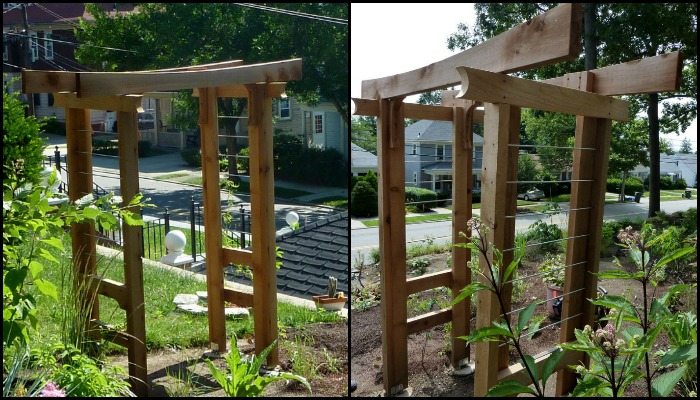
An arbor trellis is used at the top of an arch or arch-like setting, specifically a pergola, where vines and climbing plants can be trained to grow. It is a structure that supports climbing plants, such as grapes or wisteria.
The arbor trellis is typically located in a garden or arboretum, and sometimes in public parks or along the exterior walls of residential homes.
The arbor is a simple type of trellis or lattice that is usually constructed from wood but can be made of other natural materials like bamboo or stone.
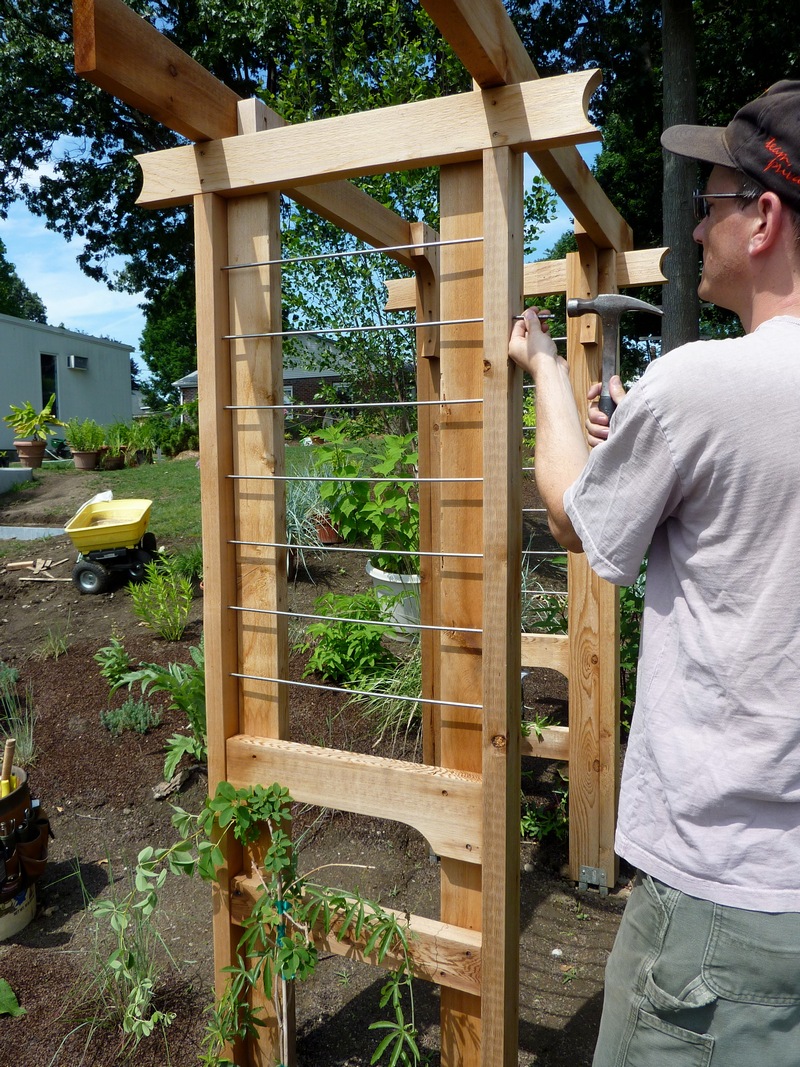
The word trellis comes from the French word ‘trelis’, which means a wooden framework for vines to climb.
An arbor trellis makes a lovely entrance to a whole garden or just a garden room. With the added trellising, you can also grow your favourite creeper.
Building an Arbor Trellis
Materials
- Cedar Timber
- .25″ OD (outside diameter) x .028″ wall T-304/304L Stainless Steel Tubing
- Wood Putty
- #4 nails
Tools
- Hammer
- Hack Saw
- Measuring Tape
- Drill
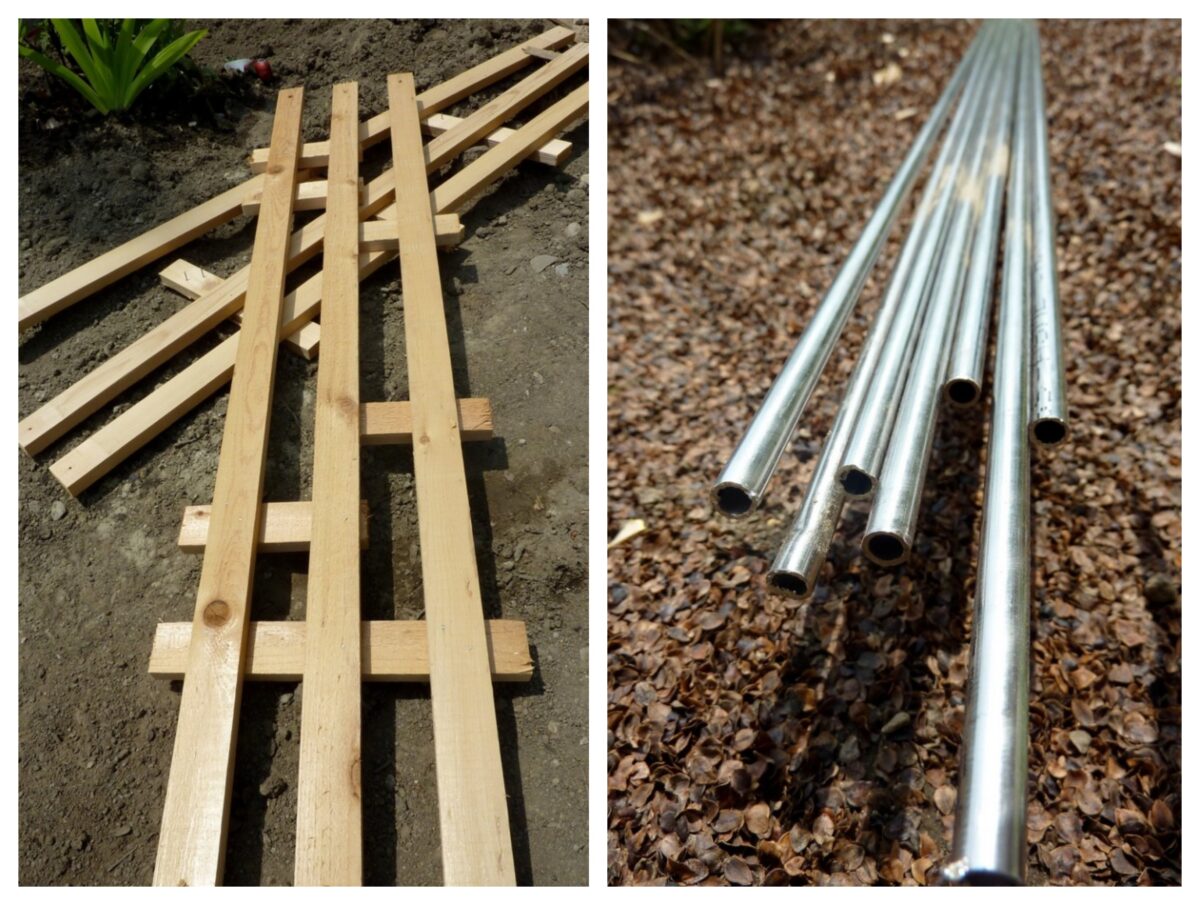
Instructions
Plan your arbor trellis
A budget plays an important role when planning a project. It gives you a glimpse of how much money you are willing to spend on the project.
But one must also be reminded that it is not just the cost of the project that plays a role but the quality of the materials used. Quality materials will ensure that the project will last longer.
It is a lot cheaper to buy low-quality materials, but you will have to replace them sooner than the ones with high quality.
This project is one that requires patience. Take your time researching what kind of plants you want before you start building.
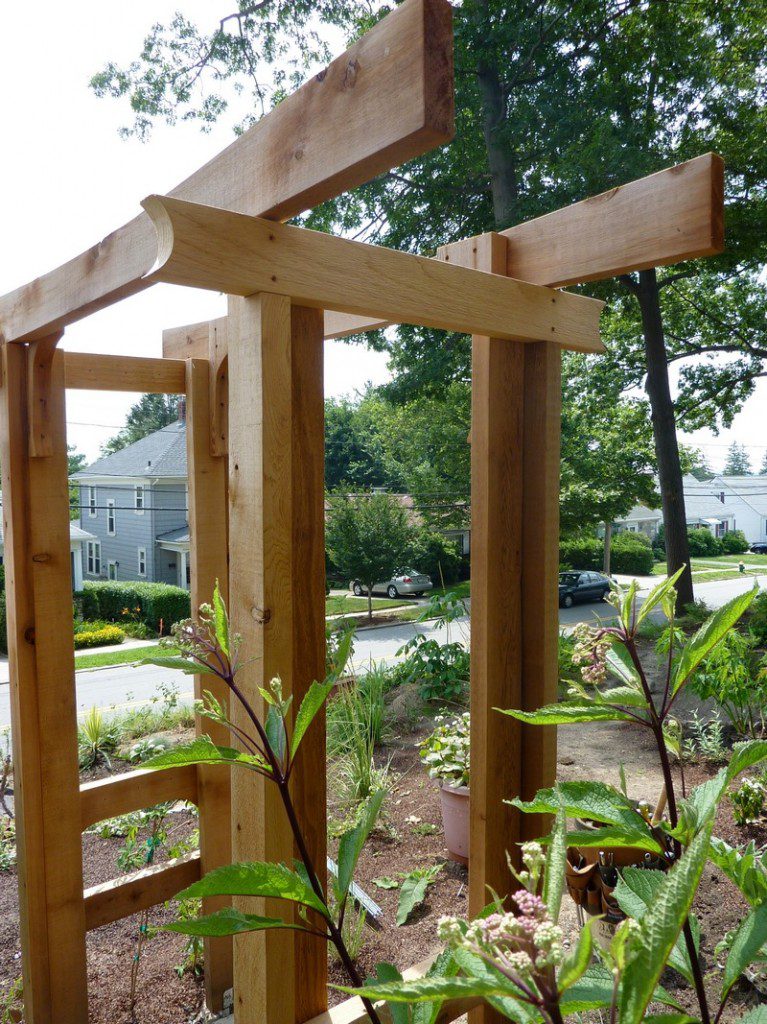
Build the base
After gathering all the materials needed for your project. Measure the dimension of your arbor trellis based on the plan that you made. Cut the timber into the parts of your trellis.
The base is the most important part of the trellis that you want to build because it is the anchor that the whole structure relies on. As long as the base is sturdy, the rest of the trellis will be fine.
The base is the most essential part of the trellis, just as the foundation is the most essential part of any home. All of the other parts of your trellis will be built upon this foundation, and if it isn’t sturdy, they will all collapse.
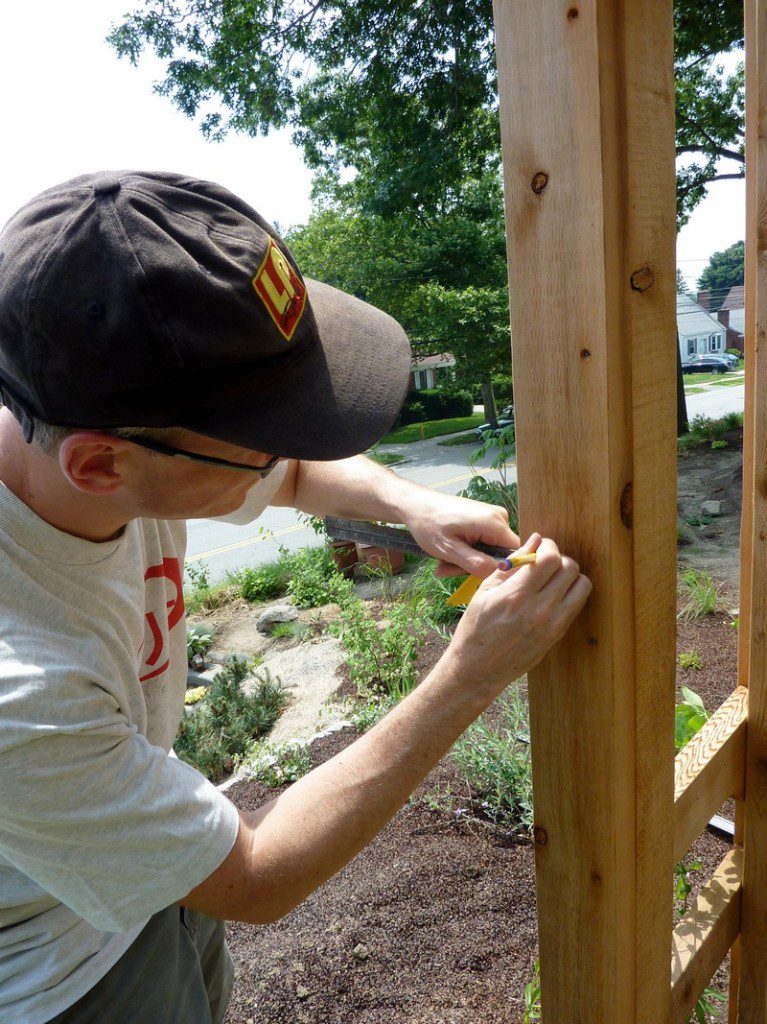
Attach your trellis
After securing the base of your arbor trellis, attach the other parts as well. Don’t forget the trellis (using the steel tubing), you can attach them by drilling the parts where you want to attach them first and secure them using nails.
It is very important to secure the trellis to the arbor because the trellis is the framework of the arbor and will be the support for the plant. You can also use brackets to support the trellis to the arbor.
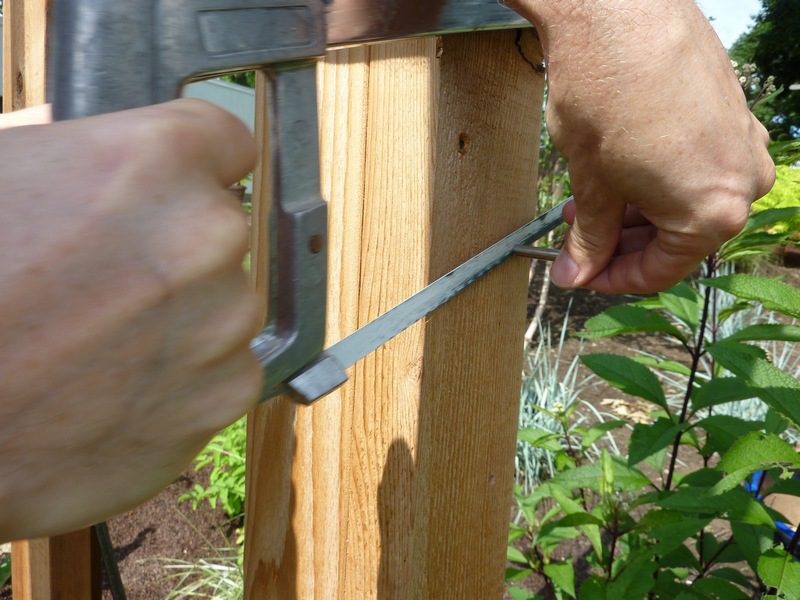
Add accessories
There are a variety of arbor trellis accessories you can add to your trellis to make it attractive, easy to maintain and safe to use.
Trellis accessories can be added to the structure of your arbor trellis after you complete the structure and before planting it in the ground. Some arbor trellis accessories include a gate, handrails, fencing and arbor covers.
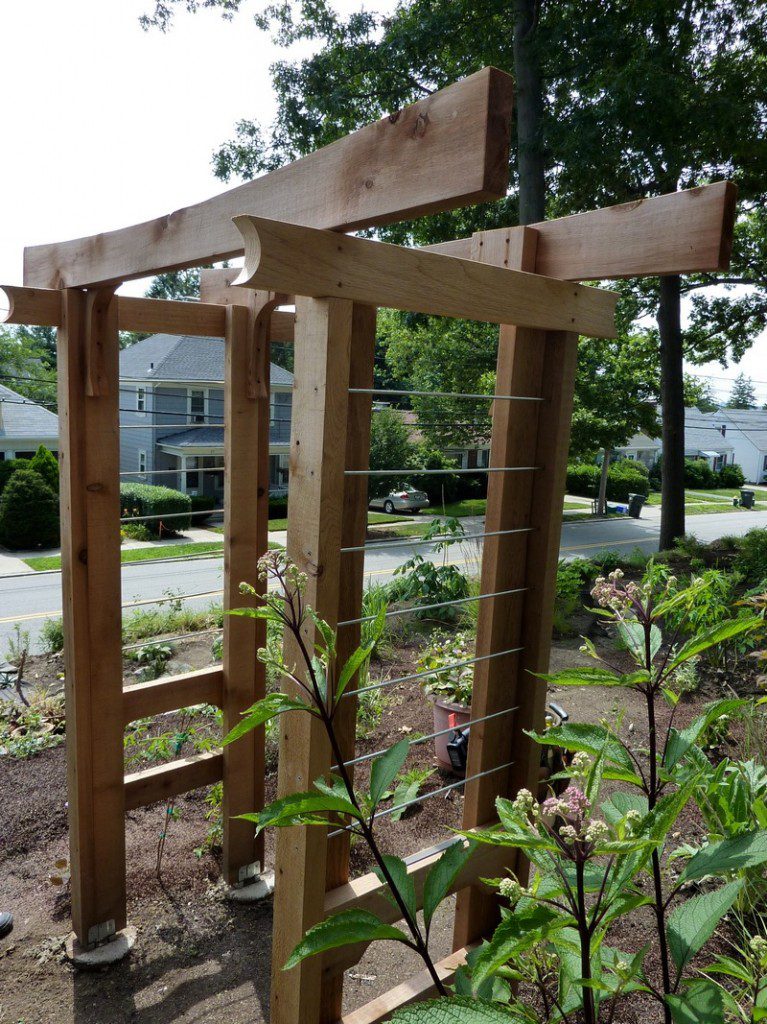
Wisteria, jasmine, grapes? What would you grow if you had this trellis in your yard? 🙂
Click on any image to start the lightbox display. Use your Esc key to close the lightbox. You can also view the images as a slideshow if you prefer 😎






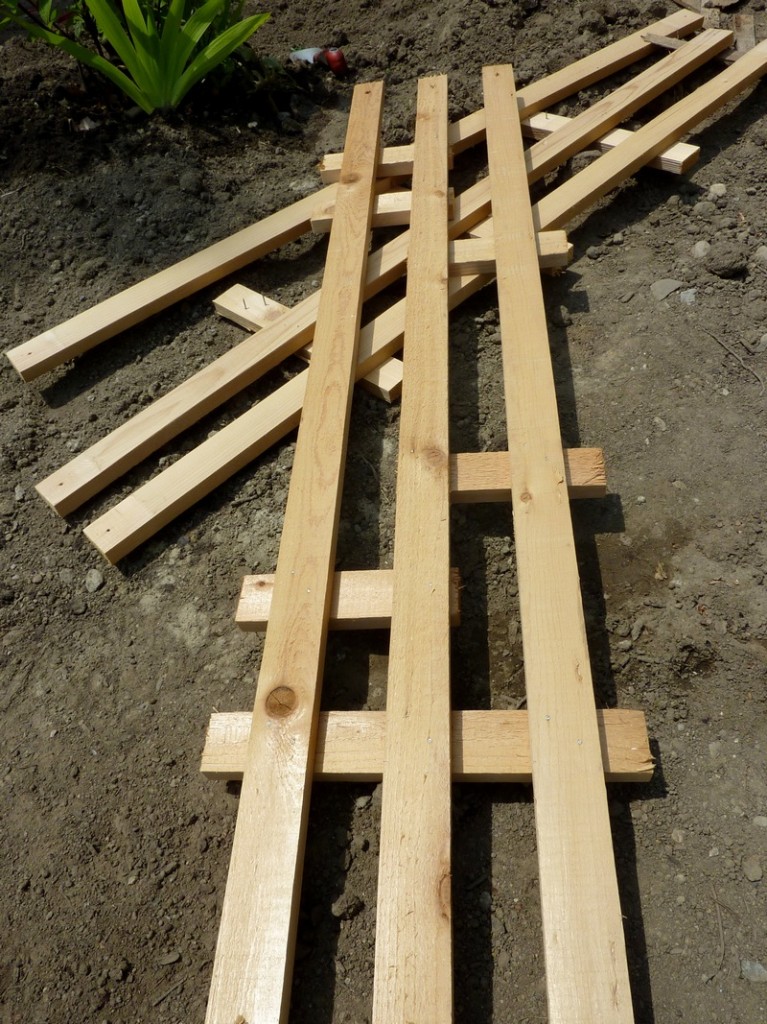
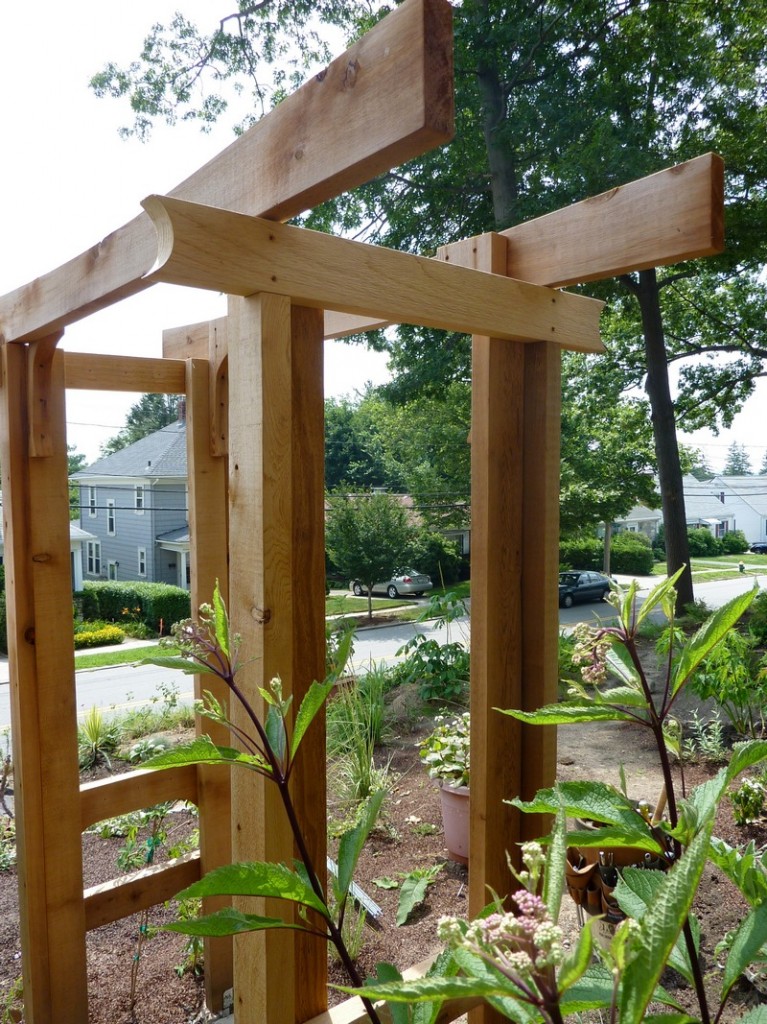
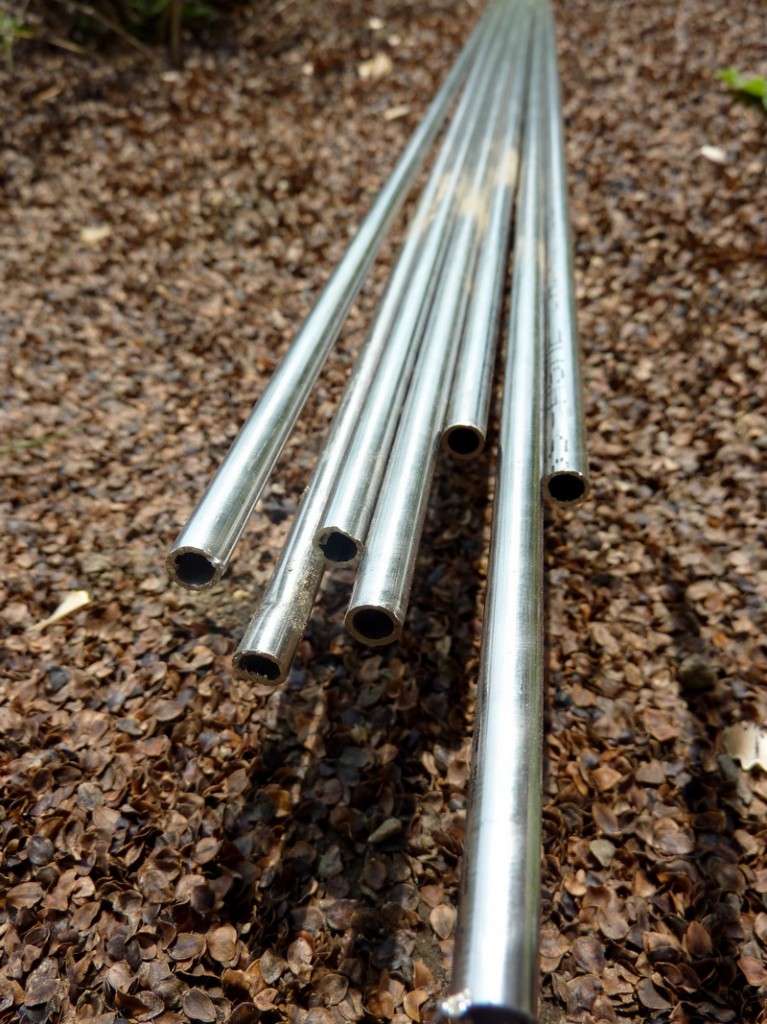
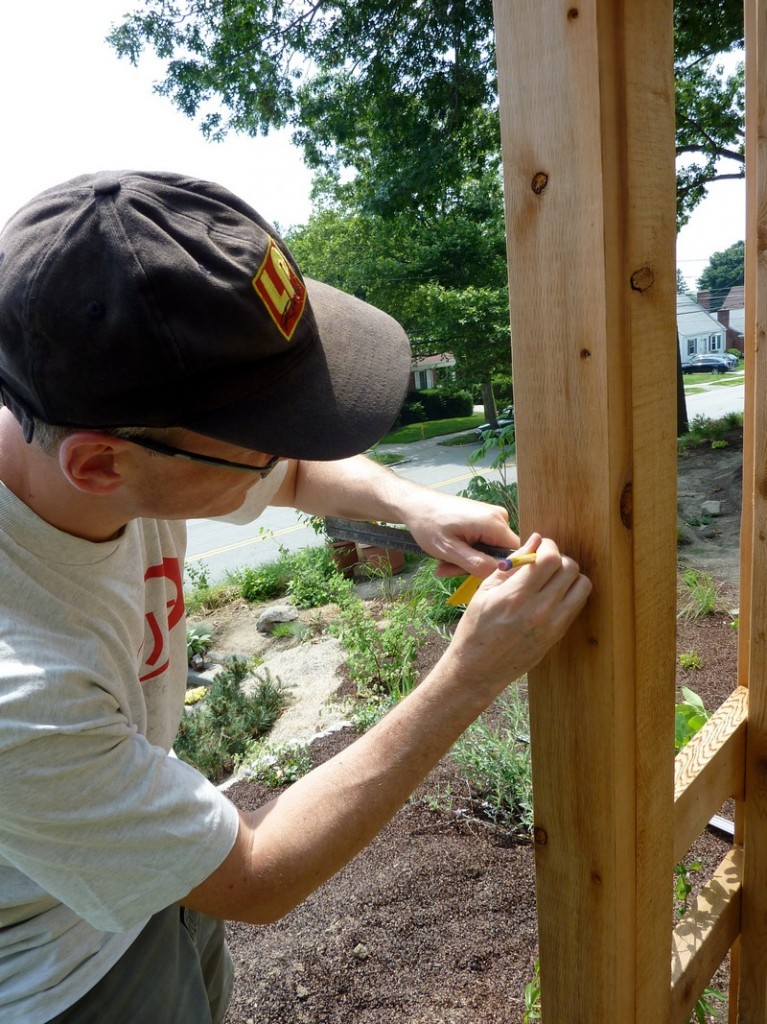
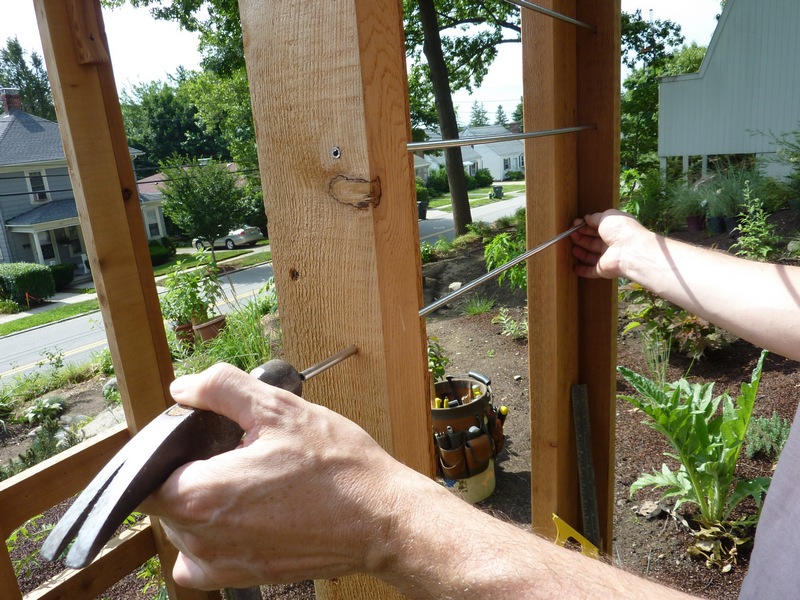

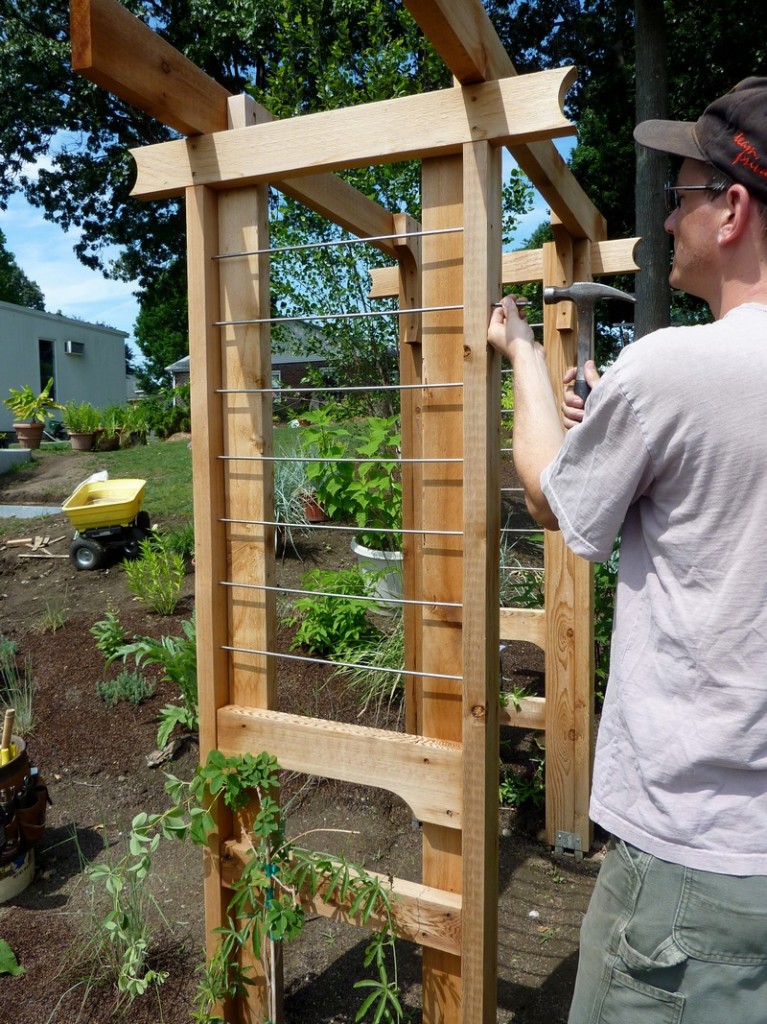
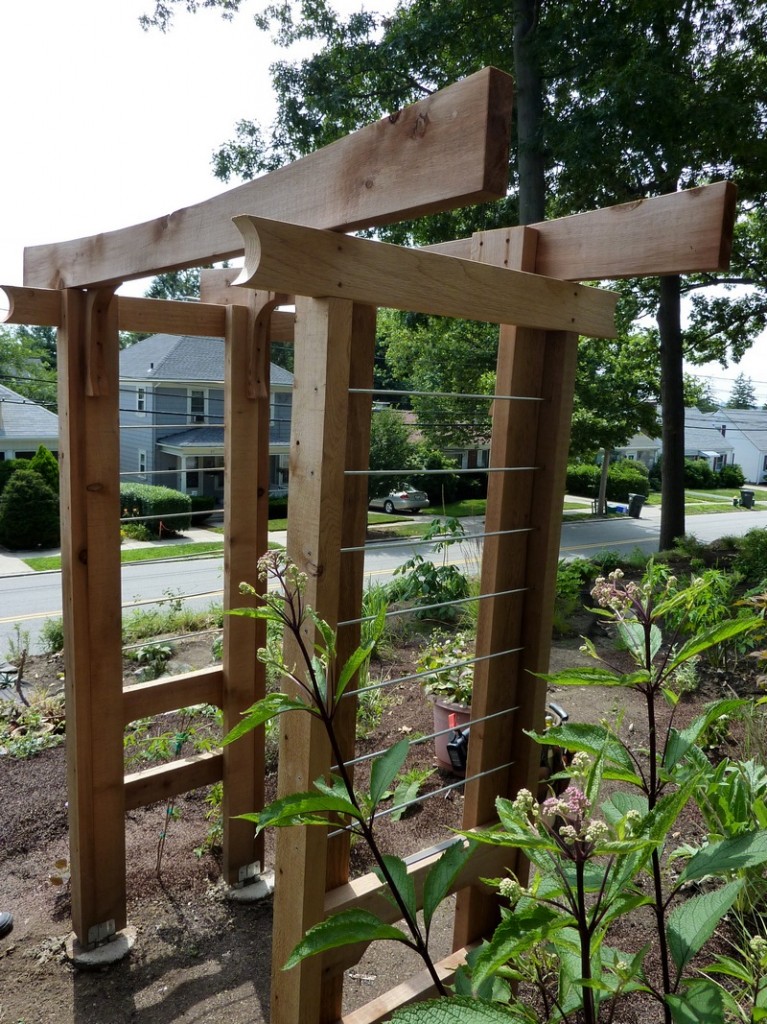
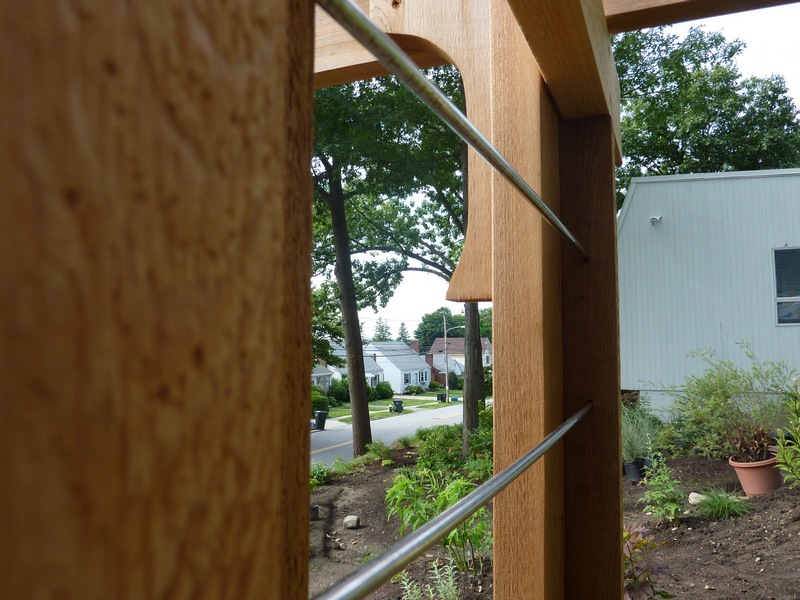
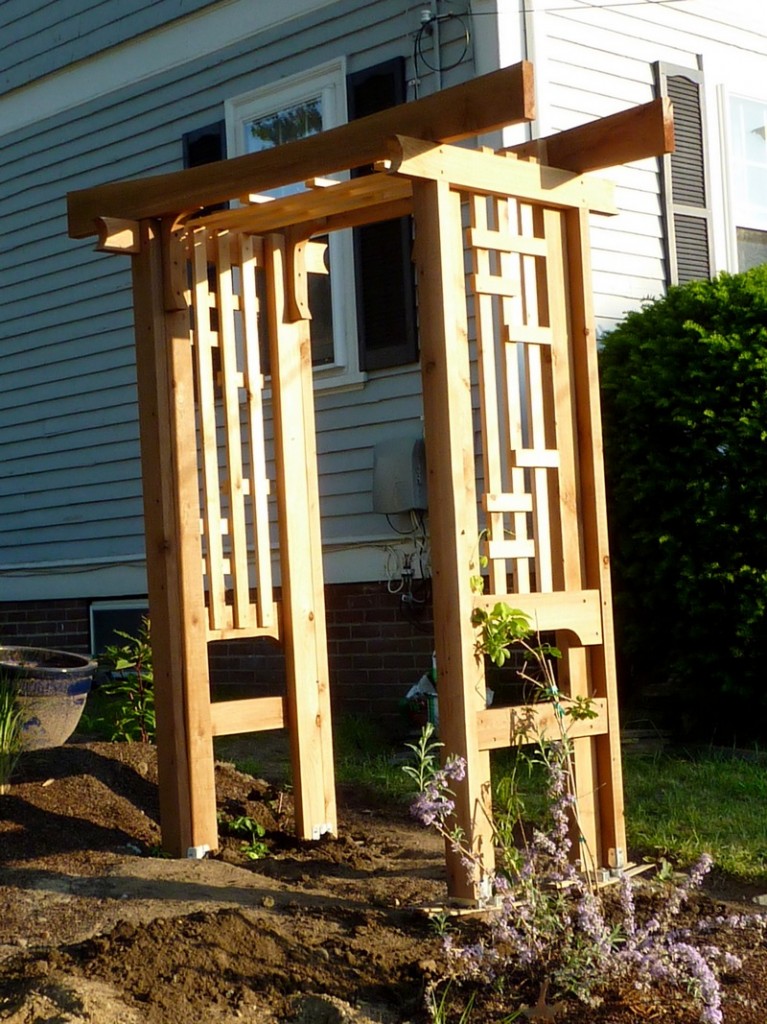
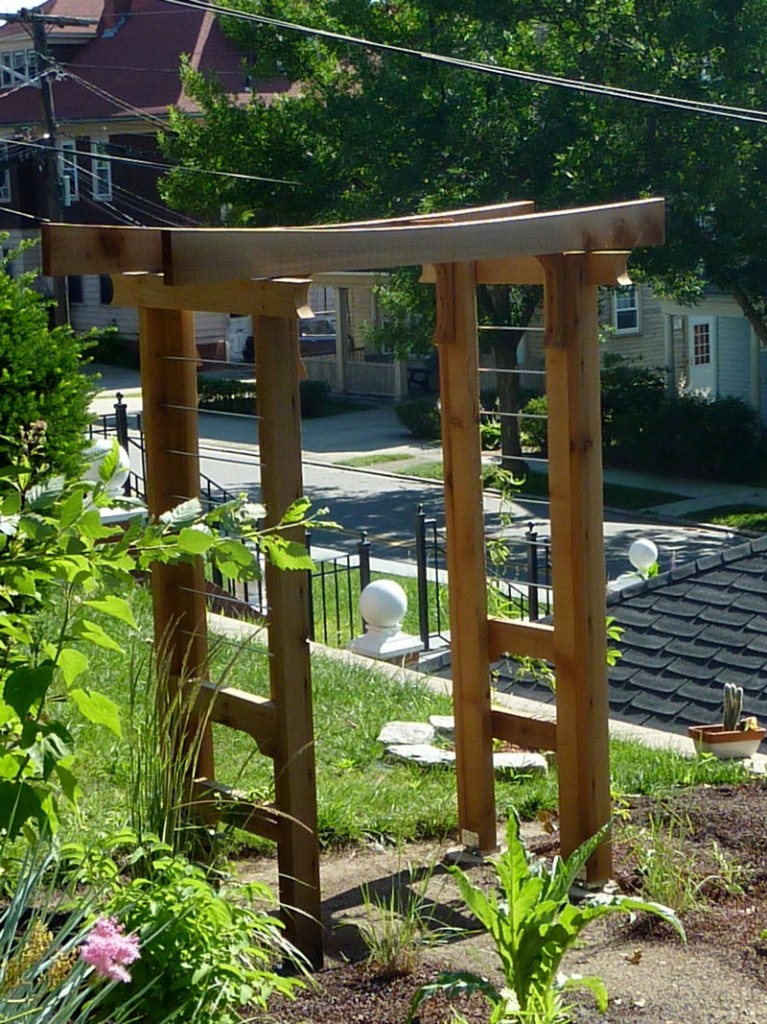
Thanks to My Mod Remod for this great project. You can get the step by step instructions here…
Choosing the Right Location for Your Arbor Trellis
It’s important to choose the perfect location for your arbor trellis. It will impact your climbing plants’ growth and improve the garden’s general appearance. A strategically placed arbor trellis can transform an average garden into a stunning landscape. The important factors and procedures to assist you in selecting the ideal site are listed below.
Assess Sunlight and Shade
Climbing plants typically need ample sunlight to thrive, although some may require partial shade. Evaluate the patterns of sunlight and shade in your yard throughout the day. A location that receives at least six hours of sunlight is ideal for most sun-loving vines like roses and wisteria. For shade-tolerant plants like ivy, areas with filtered sunlight are suitable.
Consider Soil Quality
The soil quality has a major impact on how well the plants grow on your arbor trellis. Examine the pH, fertility, and drainage of the soil. Because they avoid waterlogging, which can harm plant roots, areas with well-draining soil are ideal. Consider using raised beds around the base of the trellis or improving the unsatisfactory natural soil.
Analyze Aesthetic Impact
Think about how the arbor trellis will integrate with the existing garden layout. It should serve as a focal point without obstructing views or overwhelming other garden features. Ideal locations include over a garden path, as an entrance to a garden room, or as a standalone feature in a visible but underutilized part of your garden.
Ensure Accessibility
Place your arbor trellis where it’s easily accessible for maintenance and enjoyment. Ensure there is enough space around it for pruning, cleaning, and plant care. Also, consider how it will be viewed from different parts of the garden and from inside your home. This positioning adds to the enjoyment of the visual appeal of your trellis as the plants mature.
Check Proximity to Structures
Make sure the chosen location doesn’t interfere with underground utilities or encroach on structures like fences or building foundations. Also, placing the trellis too close to walls might limit air circulation and increase the risk of plant diseases. A little space can allow plants to grow freely and reduce damage to both the trellis and nearby structures.
You may put an arbor trellis at a spot in your garden that will enhance its beauty and charm while also giving your plants the best possible growing circumstances by carefully weighing these factors.
Planting and Training Climbing Plants
Climbing plants can add a vertical dimension to your garden, creating an eye-catching display of foliage and flowers. Proper planting and training are key to the success of these climbers, ensuring they grow healthy and look their best.
Here’s how to effectively plant and guide climbing plants to achieve optimal growth.
Selecting Suitable Climbers
Choose climbing plants that match your garden’s climate, soil, and sunlight conditions. For sunny spots, consider fast-growing climbers like clematis or climbing roses, which thrive in rich, well-draining soil. For shadier areas, ivy or climbing hydrangea might be ideal. Also, consider the growth habit and mature size of the plant to ensure it won’t outgrow the space.
Preparing the Planting Site
Prepare the soil by removing weeds and incorporating organic matter such as compost or well-rotted manure. This improves soil fertility and drainage, which are crucial for the healthy growth of climbers. If the soil is particularly poor or compacted, consider raising the planting area to improve drainage.
Planting Techniques
Dig a hole that is twice as wide and just as deep as the plant’s root ball. Position the plant so that the top of the root ball is level with the soil surface. Backfill with the amended soil, firming gently to eliminate air pockets. Water thoroughly to settle the soil around the roots.
Training Young Plants
Begin training early to guide the plant’s growth in the desired direction. Attach the plant gently to a support structure using soft ties or garden twine. Arrange shoots loosely to allow for air circulation and growth, securing them in a way that spreads the plant evenly for balanced growth and coverage.
Ongoing Care and Pruning
Regular pruning not only helps maintain the shape of your climbing plants but also encourages new growth and flowering. Prune dead or overcrowded branches in early spring or after the plant has flowered, depending on the species. This keeps the plant healthy and prevents it from becoming too heavy for its support.
Monitoring for Pests and Diseases
Keep an eye on your climbers for signs of pests and diseases. Common issues include aphids, spider mites, and fungal infections like powdery mildew. Early detection and treatment can prevent more serious damage to the plants and keep your garden looking its best.
You can make sure your climbing plants are well-established and trained to have a striking visual impact in your yard by following these instructions. These plants will thrive and provide lush, vertical beauty for many seasons if given the proper care.
Conclusion
Building an arbor trellis is a rewarding project that enhances any garden. It provides a sturdy support for climbing plants, creating a natural, lush entryway or a focal point. With careful planning and selection of materials, your trellis will stand the test of time and weather. Enjoy the process of watching your garden transform as plants weave their way up this charming structure.
If you liked this project, you will also like viewing other gardening ideas…








